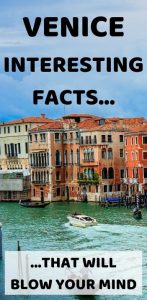Table of Contents:
Interesting Venice Facts – Mind-blowing Facts About Venice
There’s nowhere on Earth that can rival the mixture of natural beauty, historical importance, cultural resonance, and absolute uniqueness that is to be found in Venice. Whether you’re taking a stroll across one of its many bridges, drifting along one of its countless canals, taking in the serenity of its natural beauty or the crazed atmosphere of Carnival, a stay in Venice is sure to be a memory you will keep with you for a lifetime. For both citizens of and visitors to Italy, Venice facts can quite often amaze. Here they are:
Venice Italy facts #1
There’s A Dark Side of Venice Carnival
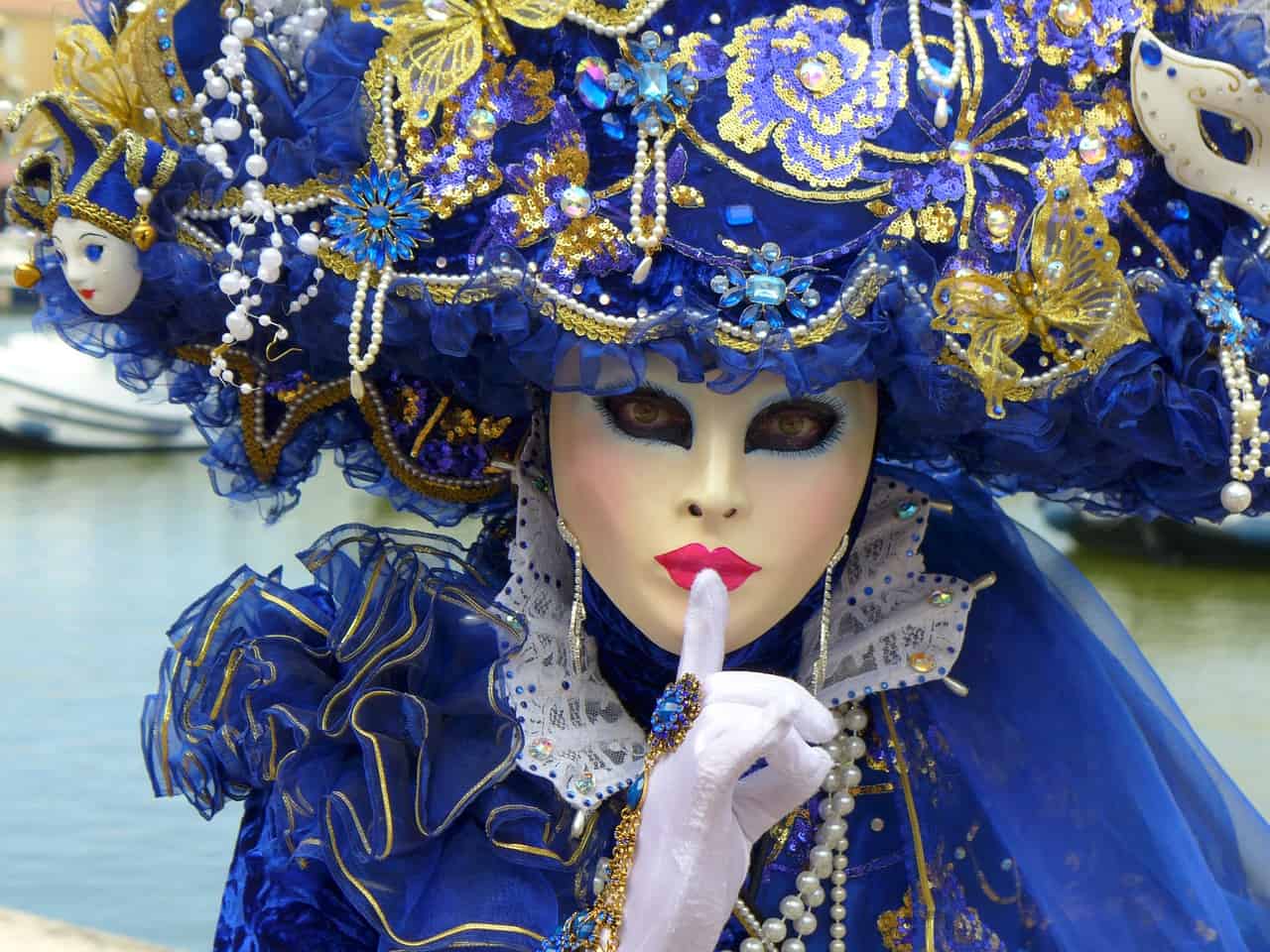
One of the most distinguishing festivals of Venice, Carnival can seem on the surface to be a bright and colorful bacchanalian party. Go a bit beneath that surface, however, and like the rising water levels and soil which currently have Venice sinking at 2mm a year, you’ll find a murkier history ‘masking’ the one of the darker Venice in Italy facts on our list.
The bright masks which are so iconic to the Carnival celebrations frequently feature long hooked noses. These unique designs are thought to have begun as references to plague doctors and other figures from the Black Death, which ravaged Venice, as it did much of Europe, throughout the mid-1300s.
What’s more, while they may be fun and games today, centuries ago, these masks were serious business. Venice’s elected Council of Ten passed strict laws on the wearing of masks back in 1608, restricting them to the Carnival season and prescribing severe punishments and shame for those who dared transgress the rules.
Venice interesting facts #2
Venice Was Once One Of The Most Powerful Countries in The World
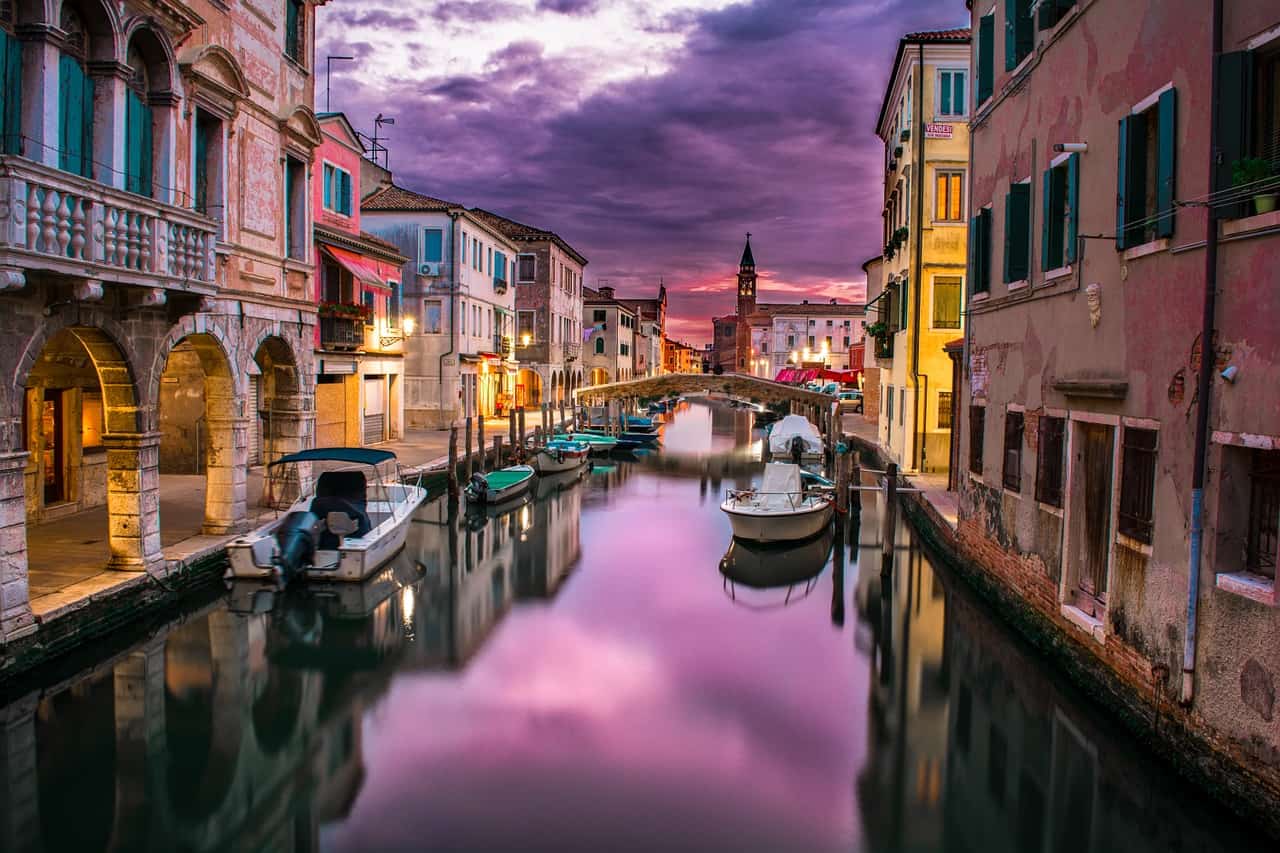
Once upon a time, Venice was the superpower of the Mediterranean, Europe, and beyond. While the Venetian Republic was at its zenith, its trading and mercantile systems, as well as its fleets, were second to none. This was an era where Venice ruled the waves, ruled trade, and became the fabulously-wealthy Renaissance super-state we see it as in our imagination to this day. If you ever wondered where so much of the money that was used to pay painters like Michelangelo, Raphael, and the other Renaissance Masters came from, Venetian trading is one of the big answers.
The Republic was a huge player on the world stage. It facilitated commercial trade and cultural exchange between Europe, Africa, and the Islamic Empires, with a huge degree of ethnic and religious diversity flourishing in the area as a result. On the flip side, Venice’s naval dominance reached its arguable peak with its key role in the Venetian-Spanish naval victory against the Ottoman Empire at the Battle of Lepanto in 1571.
There’s a lot more to Venice’s famed republic than just naval and economic superiority, however. For one thing, in a post-Roman Empire Europe dominated by kings and the Catholic Church, the very fact that Venice was a republic at all was and remains noteworthy. Its republican influence on the future ranks among the most interesting facts about Venice Italy which the West should cherish.
The Republic of Venice lasted for 1100 years, from 697 until Napoleon’s annexation of the territory in 1797, and served as an inspiration to the republic- and democracy-backing philosophers and statesmen throughout the Enlightenment. Western democracies owe a great deal to the likes of Locke, Voltaire, Rousseau, and Hamilton, who in turn owe a debt of inspiration to the legacy of the Republic of Venice.
Fun Venice facts #3
Venice May Disappear In The Future
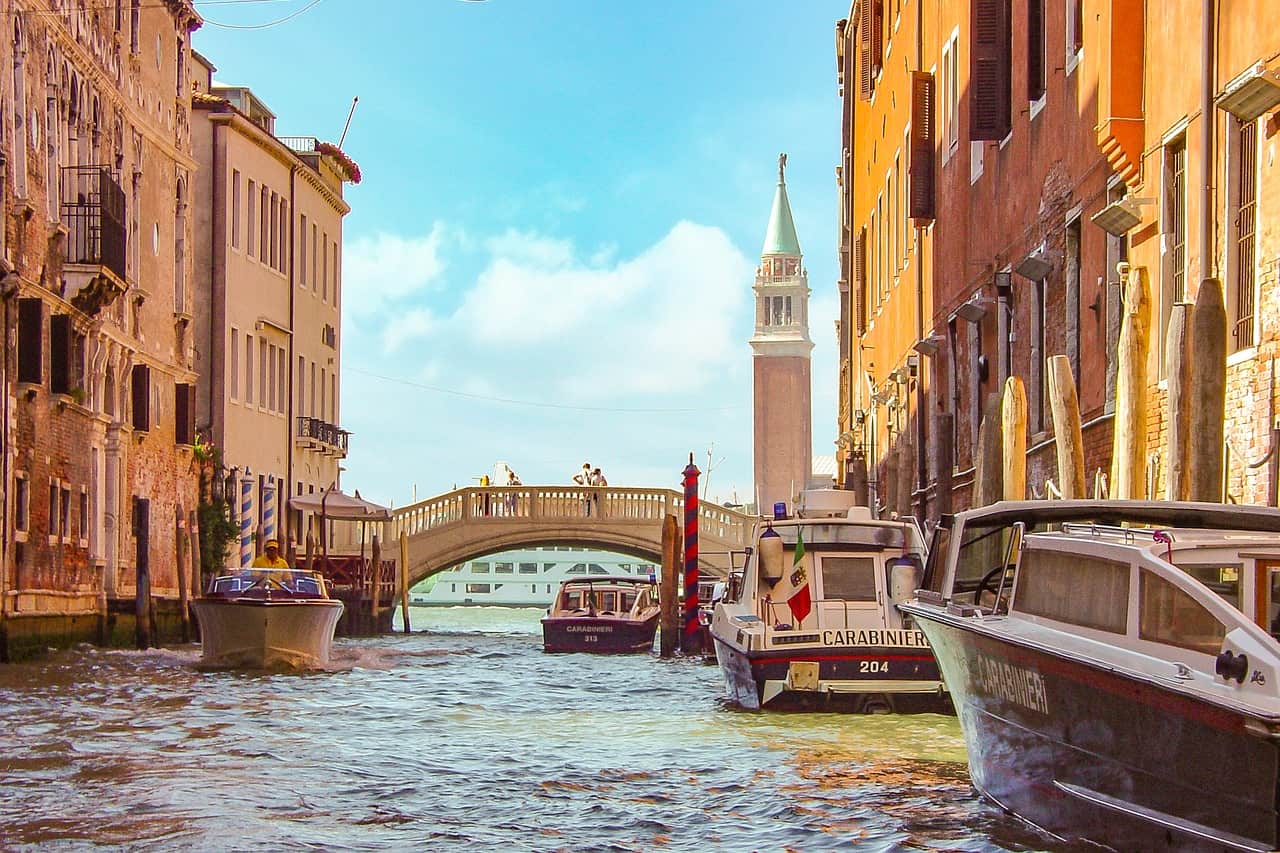
You’ve probably heard that Venice is sinking but you may be surprised that it may go underwater before 2100! That means your grandchildren may not ever have a chance to visit this amazing city.
Venice is one of these places in the world that are slowly disappearing. There are many others, including Galapagos, The Maldives, or Glaciers in Switzerland.
Venice interesting facts #4
Venice and Amsterdam Are Similar
While there’s nowhere on Earth quite like Venice, Amsterdam may be one of the closet parallels. That lovely lowland city is, like Venice, home to hundreds of bridges and canals. In fact, whereas Venice is home to more than 400 bridges, Amsterdam is home to more than three times that amount, while Venice’s 117 different islands tops Amsterdam, which is home to more than 90. Both cities are beautifully complementary, which makes it all the more concerning that both are threatened by rising tides with the looming prospect of global warming.
Both cities have thus become prominent symbols of the natural and cultural beauty we need to protect from rising sea levels and the forces causing them.
Interesting Venice facts #5
Venice Inspired World-Famous Poets Throughout The Ages
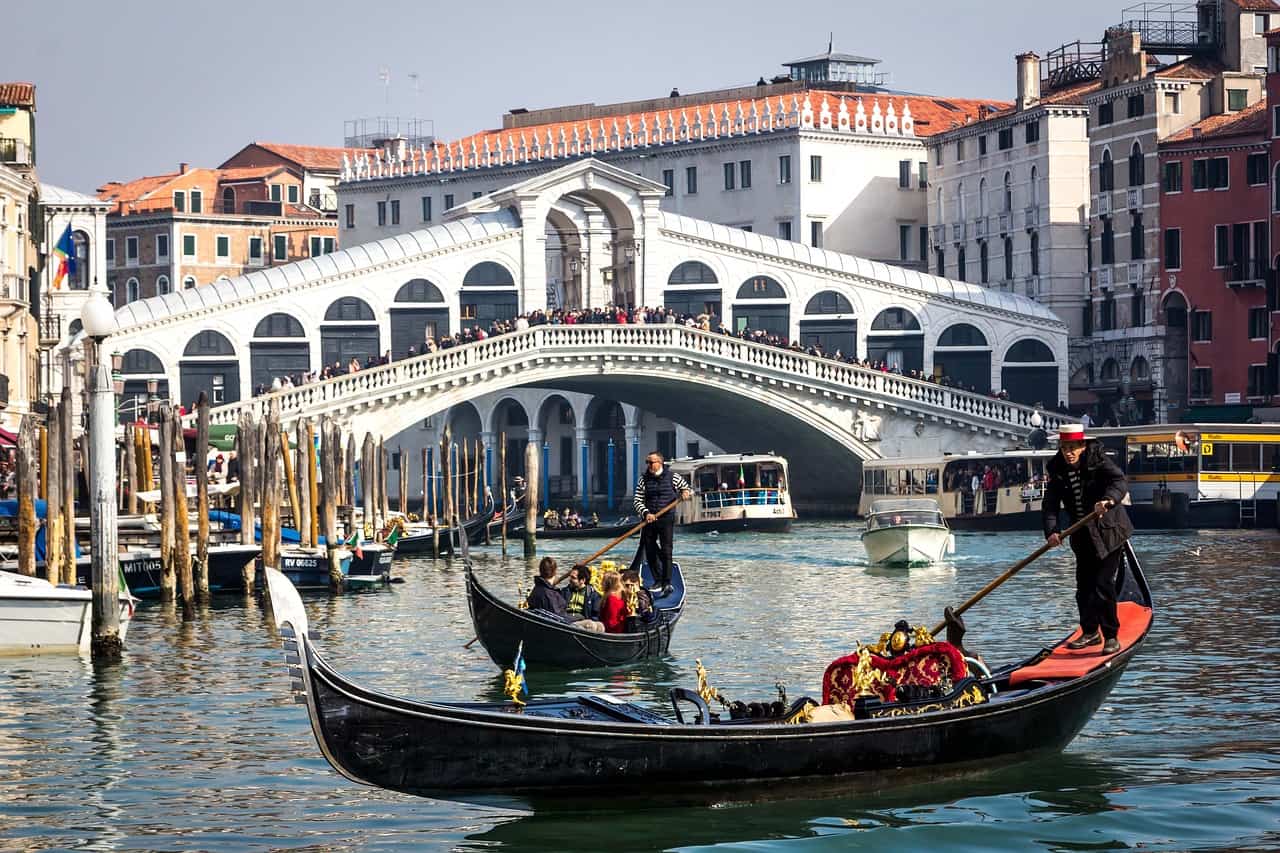
It isn’t just painters who have been inspired by Venice as a site of natural and artistic beauty. The city has also played host to more than its fair share of literary masterpieces.
Shakespeare sets two of his most famous plays in the city—Othello, which carries the subtitle “The Moor of Venice,” and of course The Merchant of Venice. Both of these works delve into the complex racial and religious politics which were at play in Venetian life contemporary to Shakespeare’s time. Setting plays in Italy was a common practice of the Bard’s when the issues at hand hit too close to home for an English setting, and Venice is host to this pair of plays with their still-relevant, often too-hot-to-handle themes of prejudice and persecution.
It isn’t just Shakespeare who chose Venice as the setting for literary masterpieces. The titular comic hero of Voltaire’s Candide strays across Venice during the aforementioned Carnival, while the city is right there in the title of Thomas Mann’s masterpiece Death in Venice. Goethe comments on everything from art and architecture to the Venetian way of life in his travelogue Italienische Reise. What’s more, while both Boccaccio’s Decameron and E.M. Forster’s A Room with a View spend more time in other Italian cities – especially Florence – neither can resist making references to Venice.
Venice Italy facts #6
Venetian Glass Is World Famous
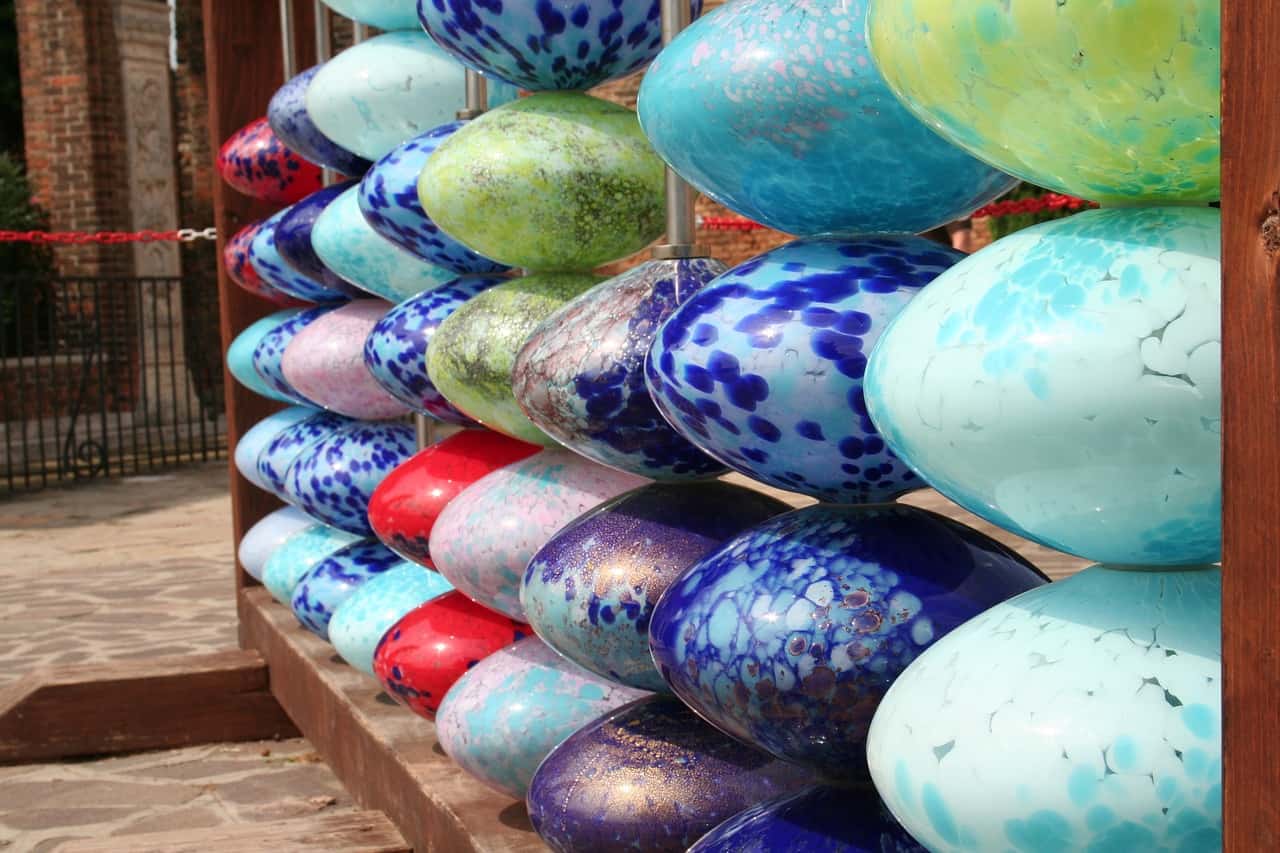
Venice has been nothing if not a center for art and trade over its long history, and few products represent a better intersection of those twin passions and points of excellence than Venetian glass. With some of the earliest examples dating back nearly 1500 years, Venetian glass has long been viewed as some of the best in the world in terms of sturdiness, craftsmanship, and beauty. When Venice was at its superpowered republican Renaissance height, ruling the waves and the world of trade, hand-blown Venetian glass was one of its most in-demand exports.
Such was the demand for these luxury items and so lucrative were they for the Republic that glass blowing became one of the most prestigious and well-paid professions within the city.
Venice interesting facts #7
Gondolas Really Are The Thing in Venice
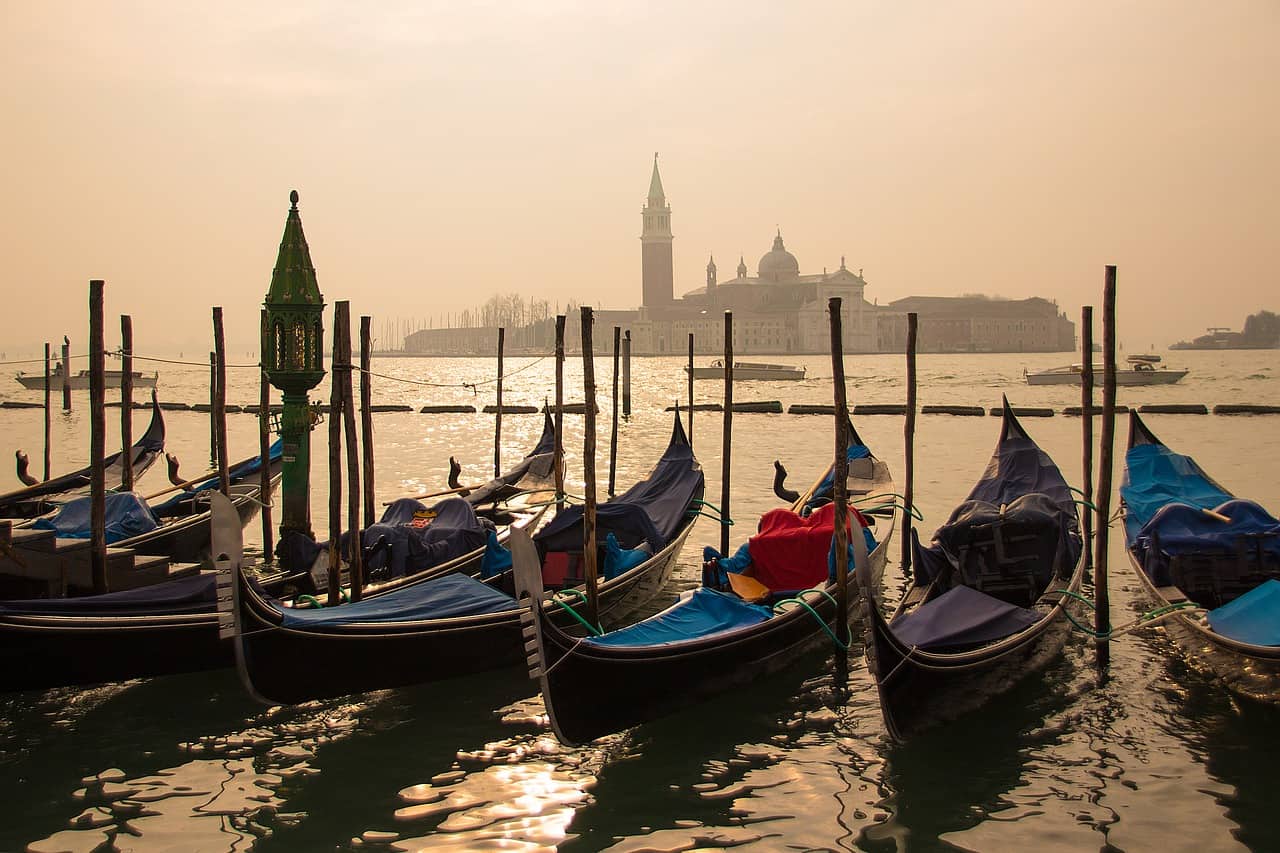
Gondolas are, without question, one of Venice’s most distinct characteristics. Whereas Amsterdam is famed for the amount of bicycle traffic it has, getting around Venice often means traveling by gondola. It’s certainly the most famous way to travel within the city, with people coming from all over the world to take a gondola ride down one of the hundreds of canals. They are the subject of a slew of different Venice facts, from the average size of gondolas (11 meters, if you’re curious) to the fact that gondoliers are overwhelmingly men, with the first recorded woman gondolier only taking to the waters in 2010.
Fun Venice Italy facts #8
Venice Is Built On 117 Islands
You probably know that Venice is located on the island. Do you know how many of them are there? 117! These islands are linked together by a complex network of bridges and canals which sit on the Venetian Lagoon, which is itself a UNESCO World Heritage Site.
That said, not every island is created equal, or naturally at that. Some of the islands are the result of human activity, with places like Sacca Fisola, for example, being “created” in the 1960s.
Interesting facts about Venice #9
Venezuela Was Named After Venice

When Italian sailor, Amerigo Vespucci first saw the area of Lake Maracaibo, he said it looks very similar to Venice. He called it “Veneziola” which literally means “A Little Venice”.
In Spanish “Veneziola” is “Venezuela”. The etymology of this beautiful South American country is thus Venetian.
Interesting facts about Venice #10
The Population Of Venice Is Declining
There are many factors why the residents are leaving Venice. First of all, it’s hard to live in a city full of tourists. Secondly, it’s way more profitable for people to rent their apartments in the historic center than actually live there. That’s why the population of residents living in the heart of Venice is declining the fastest.
Last but not least- Venice is sinking. The city may completely disappear in the future, that’s why many people decide to move to a safer place.
History, literature, art, culture – there’s the fact after fact for them all, and yet no amount of facts alone can capture the unique and enduring beauty of Venice.

